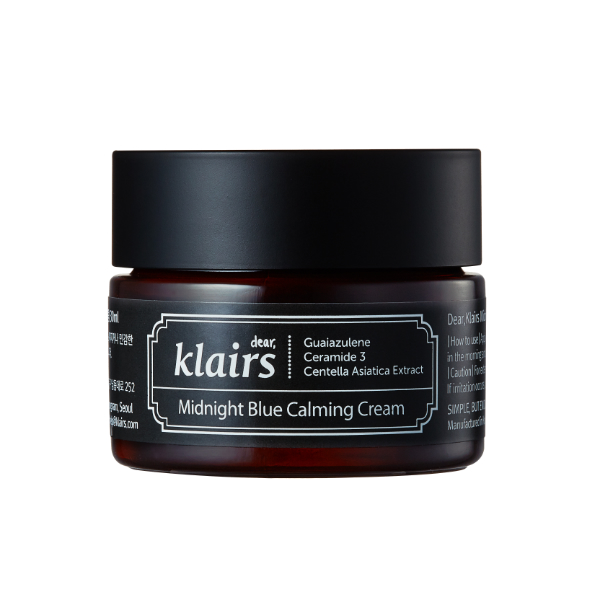It’s hard to find products that don’t irritate sensitive skin, but it’s even harder to find one that can help soothe rosacea. Here, one writer discovers that the Klairs Midnight Blue Calming Cream can accomplish both.
It’s not easy to please my very delicate and easily irritated complexion, which is why I tend to turn to skin care products specifically designed for sensitive skin types like the Klairs Midnight Blue Calming Cream. This beauty find has literally been like a gift from the skin gods.
It’s one thing to have sensitive skin, but it’s another thing to have sensitive skin that’s also oily and occasionally prone to hormonal breakouts. Most acne topical treatments irritate and dry the hell out of my skin, while most soothing formulas for irritated and stressed skin either don’t do the trick or occasionally break me out — depending on what’s in them. But after learning about how the innovative Klairs cream works to both calm and strengthen the barrier of extremely sensitive skin, I knew it was worth trying.
RELATED: How to Tell if You REALLY Have Sensitive Skin
Rosacea is a big part of my sensitive skin struggle. If you’re not familiar with rosacea, it’s a skin condition that causes your skin to blush, flush or develop redness more easily than other people. It can spread anywhere from the nose, cheeks, to the forehead and chin. And in severe cases, rosacea can form into bumps, appearing like acne-like breakouts. It’s also a lot more common among women of color than you’d think. But depending on how dark your skin is, rosacea can be easily missed or even confused for something else.
I’ve been fortunate to have a very mild case that looks more like my cheeks are flushed and is usually triggered by extreme increases or drops in temperature, intense humidity, or harsh ingredients in skincare products. Most days I’m good, but when it does form, it’s hard to get my skin to calm as quickly as I’d like. I usually deal with it by applying some tinted moisturizer to cover my red cheeks and keep it moving. But recently, I decided that I wanted to actually treat — instead of disguise — the problem.
Believe it or not, what initially struck me about the cream was its airy blue shade. Blue is not even my favorite color or anything, but it undeniably gives off a calming and healing vibe, which makes sense considering light therapy uses blue lights to heal sensitive and damaged skin. In fact, what’s behind the beautiful blue shade is actually the star ingredient in this cream: guaiazulene. It’s a powerful agent extracted from chamomile oil that works to calm irritated skin. The skin-soothing moisturizer is also formulated with centella asiatica which helps to deeply hydrate skin while relieving it of redness.
The first night I tried it I applied a thin layer and my skin instantly felt calmer and like I had just splashed my face with a major boost of moisture. I’m also convinced that I slept better that night. I’d had issues sleeping for weeks due to certain life circumstances I’ve been dealing with, and I slept like a baby that evening. That’s because guaiazulene is an anti-inflammatory that also aids in sleep.
The next morning I woke up to smoother, more supple and calm skin — no red cheeks here! Seriously, where has this cream been my whole adult life?














